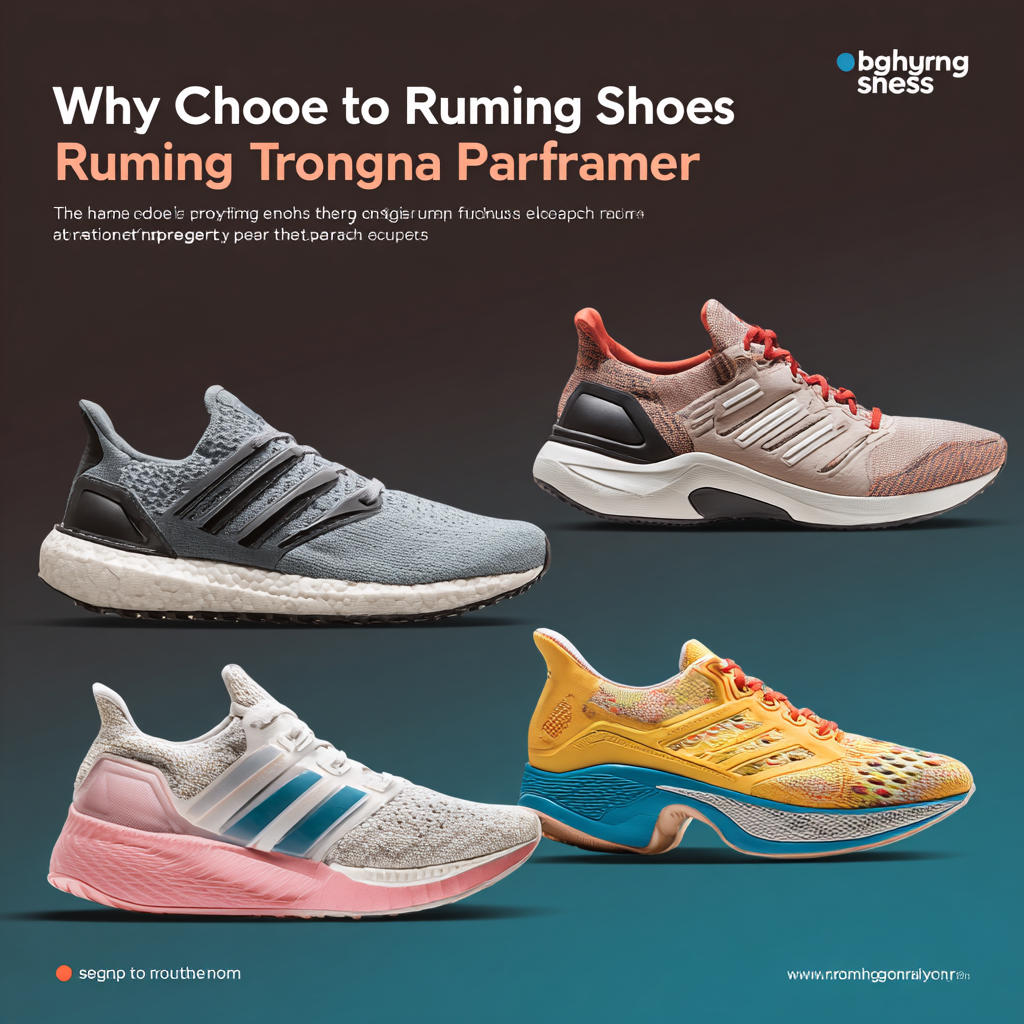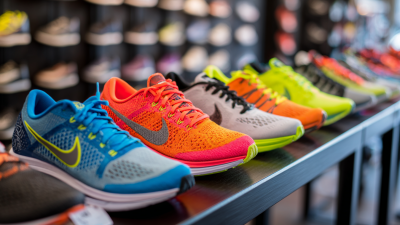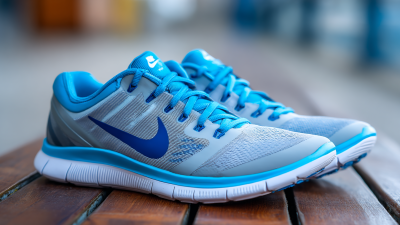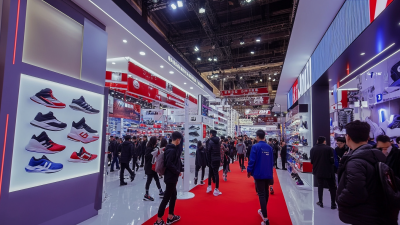
Choosing the right running shoes is paramount for any runner looking to enhance their performance and prevent injuries. As expert podiatrist Dr. Jane Smith states, "The right pair of running shoes can make all the difference, providing not only comfort but also the necessary support to maximize your running efficiency." With countless options available, selecting the perfect footwear can be a daunting task, yet it is essential for achieving optimal results on the track or trail.
The significance of wearing appropriately designed running shoes extends beyond mere comfort; they play a critical role in biomechanics and can influence a runner's stride, posture, and ultimately, speed. Many athletes overlook the importance of finding shoes that suit their individual needs, which can lead to discomfort, pain, or even long-term injuries. In today's market, where technology constantly evolves, runners have access to an array of options tailored for different terrains, distances, and foot types, making it more vital than ever to understand what to look for in the best running shoes.
As you embark on your journey to uncover the best running shoes to elevate your performance, consider not only the latest trends but also expert advice and personal fitting experiences. The right footwear can transform how you run, ensuring every step you take is a step towards achieving your goals.

 Choosing the ideal running shoes is crucial for optimizing performance, as studies indicate that the right footwear can significantly enhance efficiency and reduce injury risk. According to a report by the American Academy of Orthopaedic Surgeons, approximately 65% of runners suffer from injuries related to improper footwear. This emphasizes the importance of selecting shoes that cater specifically to individual gait patterns, foot shape, and running surfaces.
Choosing the ideal running shoes is crucial for optimizing performance, as studies indicate that the right footwear can significantly enhance efficiency and reduce injury risk. According to a report by the American Academy of Orthopaedic Surgeons, approximately 65% of runners suffer from injuries related to improper footwear. This emphasizes the importance of selecting shoes that cater specifically to individual gait patterns, foot shape, and running surfaces.
Key factors in choosing the right running shoes include cushioning, fit, and support. Research from the Journal of Sports Sciences highlights that runners who choose shoes with adequate cushioning can experience up to a 30% reduction in impact stress on joints. Additionally, ensuring a proper fit is essential; shoes that are too tight can lead to blisters, while those that are too loose may not provide adequate support, potentially impacting overall performance.
By analyzing these critical factors, runners can make informed decisions that not only enhance their performance but also promote long-term health and enjoyability in their running journey.
Understanding your foot type and how it relates to pronation is crucial for selecting the right running shoes. Pronation refers to the natural inward roll of the foot during running, which helps in shock absorption. However, not everyone pronates the same way. Runners are typically categorized into three types: overpronators, neutral pronators, and underpronators (or supinators). Each type requires different shoe features to provide optimal support and enhance performance.
Overpronators tend to roll their feet excessively inward, which can lead to various injuries if not properly supported. Shoes designed for overpronators often feature more stability and motion control, helping to counteract the excessive movement.
Neutral pronators enjoy a balanced foot strike and can benefit from cushioning shoes that support their natural biomechanics. Underpronators have high arches and may require shoes with added cushioning to compensate for their lack of foot roll. By understanding these differences, runners can make informed choices about their footwear, ultimately leading to improved performance and reduced injury risk.
When it comes to running, the importance of shoe materials cannot be overstated. Advanced technologies in footwear have led to a wide variety of materials that significantly enhance comfort and efficiency. For instance, lightweight composites and breathable meshes can help reduce fatigue by providing better airflow and minimizing weight. This allows runners to maintain their pace for longer periods without experiencing discomfort or overheating. Such innovations cater to individual preferences, ensuring each runner can find the ideal fit and feel, tailored to their specific needs.
Moreover, the cushioning and support provided by the materials used in running shoes play a crucial role in performance. High-quality foam and gel technologies absorb shock during each stride, reducing the impact on joints and preventing injuries. This not only enhances overall comfort but also allows runners to push themselves further and faster. With every step taking advantage of the latest material advancements, athletes can experience improved energy return, resulting in a more efficient running style and, ultimately, better performance. The choice of materials in running shoes is not just about comfort; it's about unlocking an athlete's full potential.
| Shoe Type | Material | Weight (grams) | Cushioning Level | Price ($) | Durability (miles) |
|---|---|---|---|---|---|
| Road Running | Mesh Upper, EVA Foam | 250 | Medium | 120 | 300 |
| Trail Running | Synthetic, GORE-TEX | 280 | High | 140 | 500 |
| Stability Running | Engineered Mesh, TPU | 300 | Medium | 130 | 400 |
| Minimalist Running | Mesh, Rubber Sole | 200 | Low | 100 | 200 |
| Cross-Training | Synthetic Upper, EVA | 320 | Medium | 110 | 350 |
 Cushioning plays a crucial role in running performance and injury prevention, making the choice of foam density in running shoes paramount. High-density foam provides a firm base that offers better support during runs, helping to stabilize the foot and reduce the risk of overpronation. This stability is particularly important for runners who put in long distances, as it can prevent strain on the arch and ligaments. Conversely, softer foams may absorb impact and provide comfort, but if they are too plush, they can compromise stability and lead to injuries, especially for heavier runners or those with existing biomechanical issues.
Cushioning plays a crucial role in running performance and injury prevention, making the choice of foam density in running shoes paramount. High-density foam provides a firm base that offers better support during runs, helping to stabilize the foot and reduce the risk of overpronation. This stability is particularly important for runners who put in long distances, as it can prevent strain on the arch and ligaments. Conversely, softer foams may absorb impact and provide comfort, but if they are too plush, they can compromise stability and lead to injuries, especially for heavier runners or those with existing biomechanical issues.
In addition to density, the type of foam used in cushioning affects how energy is returned during each stride. Advanced materials like EVA (ethylene vinyl acetate) and proprietary blends can enhance responsiveness, allowing runners to maintain efficient momentum without excessive fatigue. An ideal shoe will balance cushioning with support, tailoring the foam’s properties to the runner’s foot type and gait.
Selecting the right running shoes with suitable foam density not only enhances performance but also fosters a safer and more enjoyable running experience, paving the way for personal bests.
Finding the right running shoes is crucial for optimal performance, yet many runners overlook the importance of sizing and fit. Research indicates that approximately 70% of runners wear ill-fitting shoes, which can lead to discomfort, injuries, and decreased performance. Shoes that are too tight can cause blisters and calluses, while those that are too loose may lead to instability and misalignment during runs.
To ensure you choose the best fit, consider the following tips: First, measure your feet at the end of the day when they are swollen to get an accurate size. Next, always try on shoes with the socks you intend to wear while running. Make sure there is about a thumb’s width of space between your longest toe and the shoe’s end, allowing for natural movement and expansion during runs.
Additionally, pay attention to the width of the shoe; many runners often overlook the importance of finding a width that accommodates their foot shape. Running shoes should feel snug but not tight, as this balance can greatly enhance comfort and performance, reducing the risk of injuries and helping you run more efficiently.






